|
Shelf Awareness presents Shelf Awareness | Week of Tuesday, July 17, 2018
|
 | Publisher: | | Dzanc Books |
| Genre: | | Short Stories (single author), Small Town & Rural, General, Fiction
|
| ISBN: | | 9781945814495 |
| Pub Date: | | June 2018 |
| Price: | | $26.95 |
| The Mutual UFO Network
by Lee Martin
The title of Lee Martin's (Pulitzer finalist for The Bright Forever) masterful short story collection, The Mutual UFO Network, suggests a dive into the supernatural. But the stories are actually deeply rooted in reality, each an illuminating examination of personal failure and redemption.
The titular opening story gives us a father who's driven away his wife by selling fake footage of UFOs. She's left him not because he's a con man, but because she's convinced that the real thing is out there--she just needs to find it. The explanation he tries to give his son is heartrending. In "Across the Street," another highlight, a husband and wife purchase a house for their mentally ill adult son and leave him to his own devices. "I'm beyond worry. I mean it," says the mother. "I wash my hands." What follows is a tale of heartbreak (the neighbors are both frightened of the son and morbidly curious) and compassion (the ending redeems them all).
"Love Field" alone is worth the price of the collection. Here we're introduced to an aging widow named Belle who's drawn to the neighbor's young daughter. The girl is, we learn, a reputed troublemaker, but she reminds Belle of her own grown daughter, who never lived up to expectations. When the girl's baby sister dies in a tragic accident, Belle is caught between feelings of empathy and resentment. It's a stunner of a story that brings to light how our ugliest behaviors can also, strangely enough, make the world a better place. -- Amy Brady, freelance writer and editor |
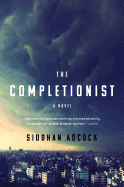 | Publisher: | | Simon & Schuster |
| Genre: | | Dystopian, General, Literary, Thrillers, Fiction
|
| ISBN: | | 9781501183478 |
| Pub Date: | | June 2018 |
| Price: | | $26 |
| The Completionist
by Siobhan Adcock
Siobhan Adcock ( The Barter) has written a haunting tale of a not-so-distant future United States ravaged by natural and environmental disasters. Its citizens engage in a battle over the country's remaining resources, especially supplies of engineered water called H2.0, which people exiled from the rehabbed cities of the Midwest attempt to sabotage.
Ex-marine Carter Quinn returns to his home in New Chicago after having served on the front to protect H2.0. He is mentally broken and dying from exposure to a chemical weapon. In addition, he must support the impending marriage and pregnancy of his oldest sister, Fred, while investigating the disappearance of another sister, Gardner--a nurse completionist (caregivers who see a pregnancy from start to finish) targeted for surveillance by the Department of Health (DOH). Infertility has resulted in a highly regulated society that places rigorous "Care Standards" on pregnant women and financially penalizes those who do not follow them, pushing families into bankruptcy. Carter's investigation uncovers an underground cult of nurse completionists seeking to subvert the DOH and reveals secrets that threaten to alienate and tear his family apart.
The Completionist explores how social and gender disparities affect women in their personal and professional lives, and how soldiers engage and die in government-induced battles over resources. It is a meticulously crafted, suspenseful and timely tale of a world that is at once familiar and strange. -- Nancy Powell, freelance writer and technical consultant
|
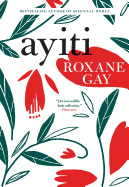 | Publisher: | | Grove Atlantic |
| Genre: | | Women, Short Stories (single author), Literary, Fiction
|
| ISBN: | | 9780802128263 |
| Pub Date: | | June 2018 |
| Price: | | $16 |
| Ayiti
by Roxane Gay
"People who leave islands always bring a complex mythology."
In Ayiti, originally published by Artistically Declined Press in 2011, novelist and cultural critic Roxane Gay ( Hunger) provides a glimpse into the experiences of Haitians and Haitian Americans. In 15 brief stories, she forges a direct path into the personal and political inheritances of her characters and the experiences rooted deep within their bodies.
In "Voodoo Child," Gay pokes fun at the stereotypes surrounding Haitians and Vodou. "There is No 'E' in Zombi, Which Means There Can Be No You or We" is a "primer" on what zombis really are and a story of desperate love. In "Of Ghosts and Shadows" and "A Cool, Dry Place," lovers push through taboos and borders, finding comfort and tiny liberations in one another. "The Harder They Come" takes to task the tourist industry in Haiti, while "The Dirt We Do Not Eat" and "All Things Being Relative" rebuff the media's representation of the country. In "Sweet on the Tongue" and "In the Manner of Water or Light," two of the more intense stories in the collection, mothers and daughters harbor secrets and seek what healing they can after enduring unspeakable violence.
There is a vast land of experiences between the so-called idyllic or flawed, between poverty or excess, between a pure here or a pure there. In so finely narrating some of these experiences, Gay shows us her fierce love for this "first free black nation in the world," this "island of contradictions." -- Shannon Hanks-Mackey, freelance editor and managing editor at the Black Scholar |
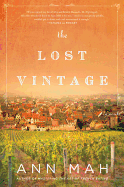 | Publisher: | | Morrow |
| Genre: | | Women, General, Literary, Fiction, Historical
|
| ISBN: | | 9780062823311 |
| Pub Date: | | June 2018 |
| Price: | | $26.99 |
| The Lost Vintage
by Ann Mah
Ann Mah weaves a layered, lush, gripping story of family secrets, wartime hardship and terroir in her second novel, The Lost Vintage. As she's cramming (again) for the famously difficult Masters of Wine exam, Kate Elliott returns to her family's vineyard in Burgundy for the first time in years. Helping her cousin's wife clear out the cluttered basement, she stumbles onto a secret room filled with World War II resistance literature and valuable wine. But while she's keen to find out more about her family's history, Kate's efforts meet with opposition from her uncle, who believes the past should stay hidden.
Mah ( Mastering the Art of French Eating) tells her story through two engaging narrators. One is Kate, whose deep passion for wine and her family's land is complicated by painful memories associated with the vineyard. The other is Hélène, Kate's great-half aunt, whose teenage diaries written during the war provide clues to the origins of the mysterious room.
As Kate digs deeper into the past, the vineyard's present also marches on, with the harvest season (known as les vendanges) at hand, the unsettling presence of Kate's first love, Jean-Luc, a neighboring winemaker, and the exam looming ever closer. The setting will draw readers in, and the captivating dual narrative and the account of one young woman's bravery are sure to satisfy. Vividly described and full of fascinating (if harrowing) wartime detail, Mah's novel is as rich and complex as the Burgundy whites produced by the vineyard. -- Katie Noah Gibson, blogger at Cakes, Tea and Dreams |
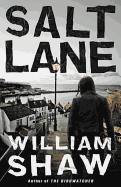 | Publisher: | | Mulholland Books |
| Genre: | | Police Procedural, Mystery & Detective, Fiction, Women Sleuths
|
| ISBN: | | 9780316563505 |
| Pub Date: | | June 2018 |
| Price: | | $27 |
| Salt Lane
by William Shaw
In this riveting thriller by William Shaw ( The Birdwatcher), Sgt. Alexandra Cupidi has recently left the London metro police for the peace of the Kentish countryside. Her brash personality, though, has made her unpopular among the local officers. Partnered with opinionated, flirty Jill Ferriter, Cupidi is resigned to her fate, until two strange murders happen within days of each other.
First, the body of a middle-aged woman is found in the marshes, with no apparent cause of death. Even more strange, no one seems to know who she is, and her biological son, who hadn't seen his mother since he was a toddler, claims she showed up at his door after the body had been found. But before Cupidi and Ferriter can get too far into this investigation, the body of a young immigrant man is found drowned in a farm's slurry tank. This stirs anti-immigrant tensions in the area, and Cupidi must use all of her big-city skills to solve these two cases.
Meanwhile, Cupidi's teenage daughter is struggling with adapting to life in Kent, and when grandmother comes down for a visit, the sergeant's personal life and professional life end up tangling in unexpected ways.
Fans of Ian Rankin or Tana French are sure to enjoy Salt Lane, an atmospheric and intriguing mystery, with timely discussion of immigration issues and a likable if slightly overbearing heroine. -- Jessica Howard, bookseller at Bookmans, Tucson, Ariz. |
 | Publisher: | | Pegasus Books |
| Genre: | | Biography & Autobiography, Self-Help, Death, Grief, Bereavement, Personal Memoirs, Jewish
|
| ISBN: | | 9781681777641 |
| Pub Date: | | July 2018 |
| Price: | | $25.95 |
| |
Starred
|
Biography & Memoir |
White Hot Grief Parade: A Memoir
by Alexandra Silber
If successful marks of a fond familial memoir include admiration and an intense sentiment of communal loss, Alexandra "Al" Silber's White Hot Grief Parade knocks it out of the park. At its core is Silber's father, who passed away when she was just 18 and "not done being raised." Michael was not just the gooey, magical center of the family, but a man who drew others to him, even the neighborhood "cool kids."
When Al and her mother, Catherine, are "cut off at the knees" by Mike's death following 10 years of cancer treatments, Al's boyfriend and two art camp friends move into the Silber "House of Death" to help. For the next several months, "Cathy and the drop-outs" forge a course through grief, a funeral fraught with horrific family rifts and, ultimately, the Aftermath.
The multi-talented Silber (After Anatevka), a Broadway actress and Grammy-nominee, refers to herself in the third person, bringing a fictional quality to the work. This style, along with lists, screenplay acts, word search puzzles, haiku and cryptograms, serves wonderfully (and painfully) to amplify Silber's emotions, as if they remain too hot to handle without expressing them through "Al."
Silber recounts historical moments as foundation for the breadth of the loss, and one can't help but regret not knowing Mike. Movingly, it is after his passing that Silber truly gets to know her mother, her parents' amazing love story and all Cathy has lost. Silber's memoir is lovingly told and teems with magic. -- Lauren O'Brien of Malcolm Avenue Review |
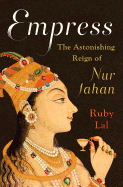 | Publisher: | | W.W. Norton |
| Genre: | | Biography & Autobiography, Women, India & South Asia, Royalty, Asia, History
|
| ISBN: | | 9780393239348 |
| Pub Date: | | July 2018 |
| Price: | | $27.95 |
| Empress: The Astonishing Reign of Nur Jahan
by Ruby Lal
Ruby Lal's biography, Empress, sheds new light on Nur Jahan, who, in the early 17th century, became the only female co-sovereign in the history of the Mughal Empire. According to Lal (Coming of Age in Nineteenth-Century India), "It would be another 350 years, when Indira Gandhi became India's first female prime minister, before another woman ascended to such heights in Indian statecraft."
Nur Jahan is a well-known figure in South Asia, the subject of "at least eight movies, several plays, an opera, and numerous historical romances." As a result, much of the book involves separating popular legends of Nur from the real-life person. While recognizing the appeal of these stories, Lal seeks to humanize the empress and focus less on the royal romance than her achievements as a ruler.
As a co-sovereign, Nur issued currency, designed buildings, issued "important orders under her own signature" and protected peasants from "harassment and overtaxation." In a particularly cinematic episode, Nur also led rescue attempts that saved her husband, the Emperor Jahangir, after he was kidnapped.
Empress succeeds in its mission to impress upon the reader the remarkable character and achievements of Nur Jahan. Nur eventually lost power after Jahangir's death, but her ability to navigate treacherous Mughal politics for so long and come out alive is its own accomplishment. According to Lal, Nur has been unfairly blamed for the civil strife that accompanied the latter part of her rule with Jahangir and given little of the credit she deserves. Empress remedies these slanders and oversights while telling an engrossing tale of female power. -- Hank Stephenson, bookseller, Flyleaf Books, Chapel Hill, N.C.
|
 | Publisher: | | Oxford University Press |
| Genre: | | Social, Epistemology, Philosophy
|
| ISBN: | | 9780190867218 |
| Pub Date: | | July 2018 |
| Price: | | $12.95 |
| On Truth
by Simon Blackburn
Simon Blackburn's On Truth is a small introduction to the big topic of truth, and it does its job admirably. An informal, sometimes funny take on what we mean when we say something is true, the book swiftly and effectively lays out roughly 400 years of philosophy in its first half, before debating the nature of truth in art, ethics, religion and science in its back pages.
Blackburn, a professor of philosophy at Cambridge, begins by placing his subject in its modern context, where "fake news" and disinformation have become relevant topics in daily life. For him, a robust defense of truth is more important than ever, and he occasionally harks back to this initial argument to remind the reader how much he believes is at stake. That being said, the prose is pretty light and breezy, even as it delves into some serious topics. Blackburn, like most philosophers, likes his hypotheticals, but he uses such moments to bring a little levity to the proceedings, making sure his readers don't feel like they're in the midst of another dull treatise.
He's also upfront about where his sympathies lie. Although he explains multiple conceptions of the truth faithfully, he doesn't patronize the reader by trying to mask which one he feels is the best. All in all, On Truth is a great introductory read for anyone wondering about contemporary discussions of the subject. -- Noah Cruickshank, adult engagement manager, the Field Museum, Chicago, Ill. |
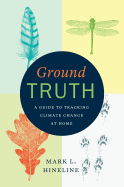 | Publisher: | | University of Chicago Press |
| Genre: | | Nature, Life Sciences, Meteorology & Climatology, Earth Sciences, Environmental Conservation & Protection, Science, General, Ecology
|
| ISBN: | | 9780226348131 |
| Pub Date: | | June 2018 |
| Price: | | $20 |
| Ground Truth: A Guide to Tracking Climate Change at Home
by Mark L. Hineline
How many of us really see the world around us? We're so caught up in our daily lives that we often miss the small details that make this planet vibrant and alive, full of sensual specifics that produce our backyards and neighborhoods. In Ground Truth, Mark Hineline encourages readers to get outdoors and observe a patch of nature, recording the sights, sounds and smells in this one spot for future reference, as it will surely be affected by climate change.
An instructor at Lyman Briggs College, Michigan State University, Hineline expertly explains the science of phenology and shares his own observations, along with those of master eyewitnesses and recorders like Thoreau at Walden Pond and Aldo Leopold, whose notes became the classic Sand County Almanac. Working from the macro to the micro, Hineline discusses landscapes, bedrocks and hardiness zones before taking a deep dive into specific plants, birds, mammals and bugs.
The author encourages readers to think about their own carbon footprint and the fact that the earth's atmosphere is changing thanks to human activity. It is up to us to decide how the future will play out; doing Hineline's homework is a great way to ensure future generations will know what Earth was like in the early 21st century. Ground Truth is sure to please fans of Bernd Heinrich and Bill McKibben. -- Lee E. Cart, freelance writer and book reviewer |
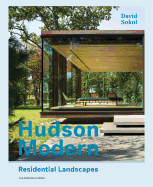 | Publisher: | | Monacelli Press |
| Genre: | | Contemporary (1945 -), Landscape, Architecture, Regional, History
|
| ISBN: | | 9781580934848 |
| Pub Date: | | June 2018 |
| Price: | | $60 |
| Hudson Modern: Residential Landscapes
by David Sokol
Just north of New York City and its eight million-plus residents lies the Hudson River Valley. Dramatic and bucolic, the region features historic towns and sweeping vistas of the Catskill Mountains and the river that bears its name. Its beauty inspired the Hudson River School, a group of 19th-century painters enchanted by the area's natural splendor. Fascination with the region continues today with the "other Hudson River School"--architects making their mark with their own testaments to the area.
In Hudson Modern, architectural writer David Sokol features residences that integrate a modern aesthetic with the rugged landscape. Each dwelling, whether it's a second home or an artist's studio, seamlessly melds with the land on which it sits. A guest house in Dutchess County is designed with large glass panes that minimize "manmade distractions" to immerse occupants into the landscape, while a house in Red Rock, whose design reflects the rough environment, emerges unobtrusively from a hillside. Natural and locally sourced materials are used alongside concrete and steel to create structures that are visionary and distinctive. Interiors are thoughtfully, if less dramatically, designed with a nod toward minimalism. Profiles of each residence and interviews with architects reveal a commitment to honor the visions of the homeowners; this collaborative spirit shines in each example.
The unobtrusive beauty of the Hudson Valley might seem like a poor choice for decidedly modern homes against the backdrop of nature and vernacular architecture. Yet each home--"unique, but not out of place"--brings these elements together to enrich an already beautiful area. -- Frank Brasile, librarian |
 | Publisher: | | Margaret K. McElderry |
| Genre: | | United States - 20th Century, Juvenile Fiction, Hippos & Rhinos, Humorous Stories, Animals, Zoos, Baseball, General, Family, Sports & Recreation, Social Themes, Historical, Multigenerational
|
| ISBN: | | 9781534406261 |
| Pub Date: | | July 2018 |
| Price: | | $17.99 |
| The Rhino in Right Field
by Stacy DeKeyser
It's the spring of 1948 and the weather is perfect for baseball. All 12-year-old Nick Spirakis really wants is "one lousy Saturday off" to participate in the local baseball league's batboy contest and possibly win "Mudpuppy for a day." Nick is fed up with having to obey his Greek immigrant father's every demand: "He makes me work in the shop every Saturday. He makes me go to Greek school every Tuesday. He talks about being American, but he wants me to be exactly like him."
Truth be told, Nick's lack of weekend freedom is not the only obstacle in his path to batboy glory. He also has a bad habit of freezing up every time a fly ball comes toward him, due to an unfortunate experience with a 2,580-pound rhino in his own team's outfield. (There's a zoo in their small Wisconsin city's park, and players must chase the occasional errant ball into cages.) And now there's a friendly new kid in town with an amazing throwing arm--unfortunately, she's a girl, which makes Nick uncomfortable and a bit resentful. In spite of the odds against him, though, Nick is determined to get to that contest, and maybe even win it.
The Rhino in Right Field is charmingly funny, like an up-to-date (but still set in the 1940s) Homer Price or Henry Huggins. Boys are "fellas" and frozen custard is the sweet treat of choice. In her author's note, Stacy DeKeyser ( The Brixen Witch; One Witch at a Time) writes that Nick's character was modeled after her father, who grew up dodging animals and fly balls in Milwaukee's Washington Park Zoo. -- Emilie Coulter, freelance writer and editor
|
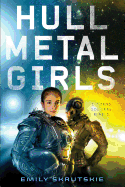 | Publisher: | | Delacorte |
| Genre: | | General, Girls & Women, Young Adult Fiction, Action & Adventure, Science Fiction
|
| ISBN: | | 9781524770198 |
| Pub Date: | | July 2018 |
| Price: | | $17.99 |
| Hullmetal Girls
by Emily Skrutskie
Seventeen-year-old Aisha Un-Haad has been taking care of her younger siblings since their parents died. As a citizen of the starship Reliant in the Seventh District, Aisha's only opportunity to scale the economic ladder is to join the Scela, the General Body's army of machinery-enhanced warriors. A devout, headscarf-wearing member of the Ledic faith, Aisha fears the body modifications required to become Scela--not to mention that the procedure kills as many people as it successfully modifies. When her six-year-old brother, Amar, falls ill with the wasting fever, Aisha knows she's out of options. "Only the desperate volunteer to become Scela, signing away their bodies and their autonomy to the General Body's command," and Aisha is desperate.
Key Tanaka wakes up post-procedure: "Ridges of metal run parallel to my lengthened bones. Ports stick out around my joints." The exorig she's now outfitted to wear is a computerized suit of armor that integrates with her nervous system. She can't remember "deciding to take the metal" and, as a wealthy, First District 18-year-old, can't think of a reason why she would. But with most of her memories gone (or hidden from her by the exo) and no way of reaching out to her family, all she can do is fall into line. Placed in a squad with two others, Aisha and Key slowly discover that the governing body they now represent and defend may not be as righteous as it would have citizens believe.
Emily Skrutskie's complex, space-based post-apocalyptic world is populated by diverse characters representing various gender expressions, sexualities, races and religions. Hullmetal Girls's governing body is perfectly sinister, the motivations of the protagonists wholly understandable and the stakes as high as they can be. A gripping and intelligent young adult read. --Siân Gaetano, children's and YA editor, Shelf Awareness
|
|
» http://www.shelf-awareness.com/sar-issue.html?issue=732
|











